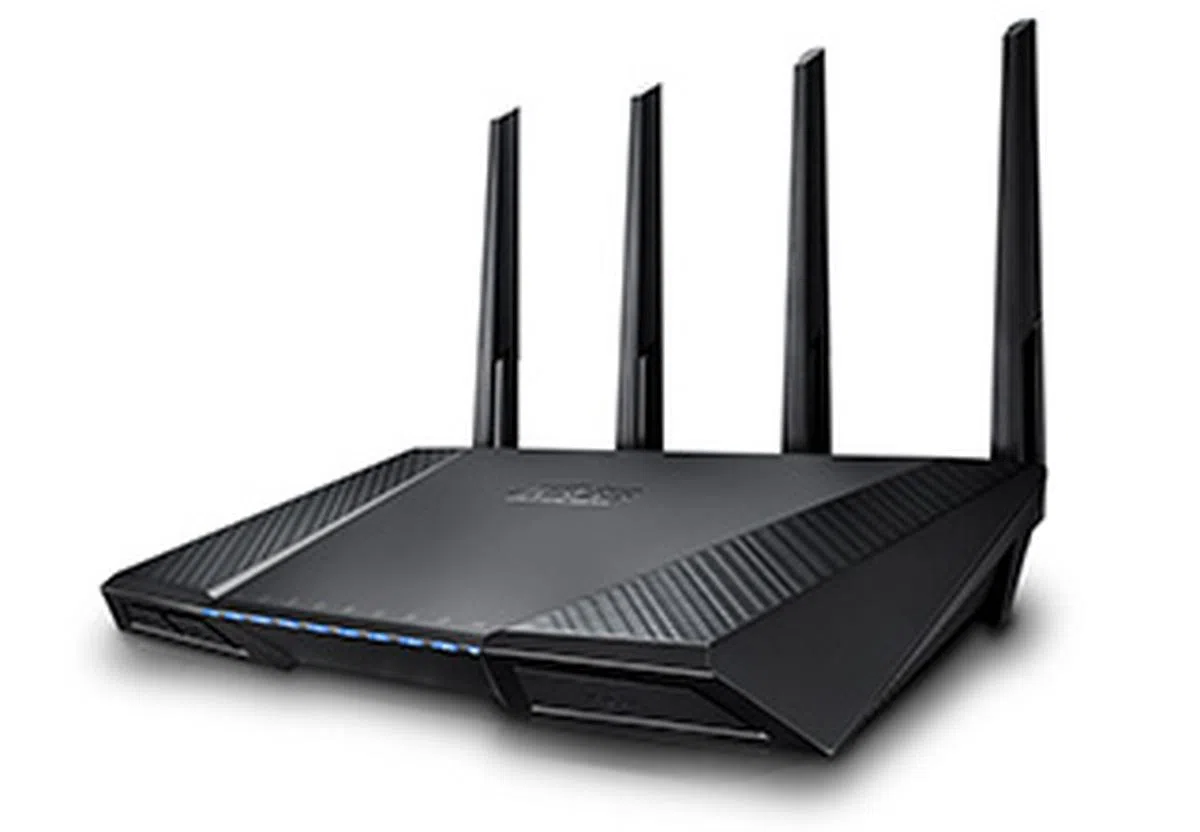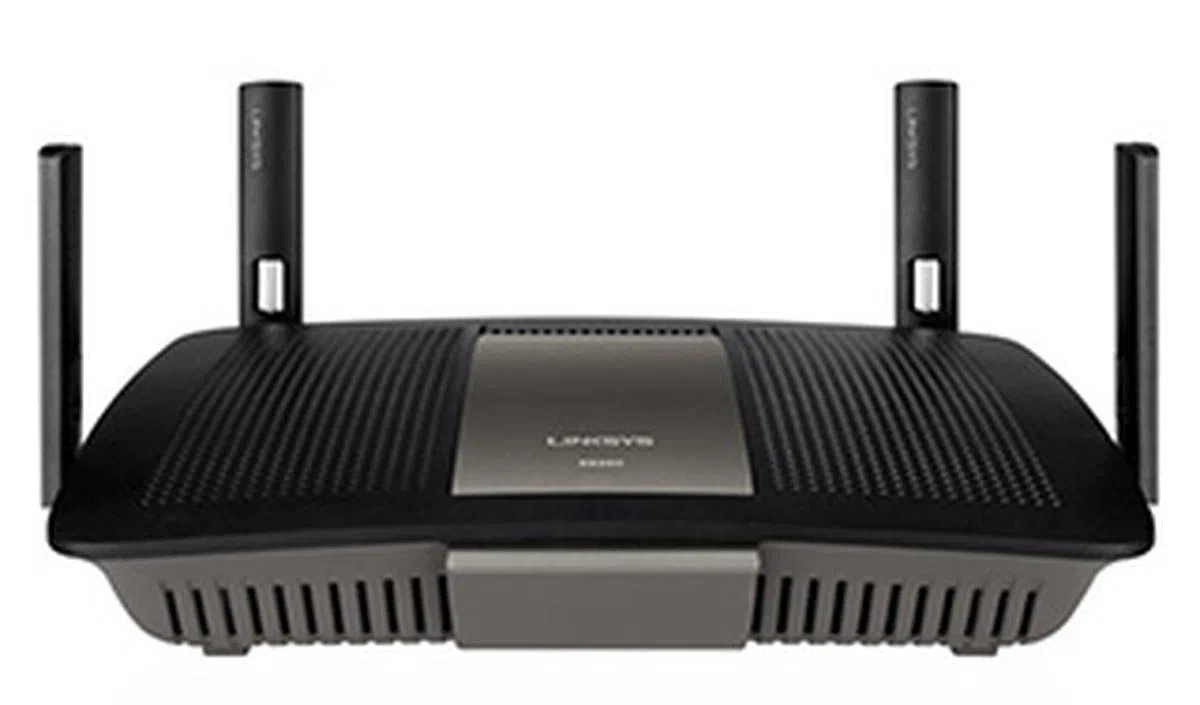AC-2400 Wireless Router Face-off: ASUS AC-RT87U vs. Linksys E8350
AC-2400 wireless routers are all the rage now and two of the hottest routers to have landed are the ASUS RT-AC87U and the Linksys E8350. To find out which is best, we dropped them both into a ring. Last one standing wins.
By Kenny Yeo -
A new wave of Wireless-AC
First things first, the new breed of AC-2400 routers that you see coming into the market are actually the first to support what is unofficially known as 802.11ac Wave 2. The AC-2400 speed rating is derived from the combination of its maximum data transfer rates of its dual 802.11ac and 802.11n bands and some generous rounding up. The numbers you are interested in are 1733Mbps on Wireless AC and 600Mbps on Wireless N. Explaining the differences between these routers and existing Wireless AC routers will take an entire feature - which will happen at a later time, so stay tuned - but in a nutshell, 802.11ac Wave 2 routers will offer support for up to four spatial streams and will also support MU-MIMO (Multiple-user Multiple Input Multiple Output).
Current Wireless-AC routers support only three spatial streams, it is the additional fourth stream that lets these AC-2400 routers attain its maximum data transfer rate of 1733Mbps on the 5GHz band. Each stream still supports a maximum data transfer rate of 433Mbps. On the other hand, MU-MIMO will allow the router to deliver data to multiple devices at once. Unknown to many, most routers in the market right now can only send data to one device at any one time. In theory, MU-MIO can help reduce the “waiting time” if you have multiple devices connected to the router. We will expand on this in a more fleshed-out feature in future, but for the time being, known that these AC-2400 routers are the first 802.11ac Wave 2 products to hit the markets and they do offer some important performance enhancing features.
And with that we will turn our attention to the two routers we have on hand today, the ASUS RT-AC87U and Linksys E8350. Both tout maximum data transfer rates of up to 2400Mbps and are their respective companies’ newest and fastest routers. We begin with the ASUS RT-AC87U.
The ASUS RT-AC87U

The ASUS RT-AC87U is the company's latest flagship router and it looks absolutely menacing.
ASUS’ has become one of the most successful names in home networking and has released a string of hits beginning with the revered RT-AC56U router from 2010. That router was followed by the equally stunning RT-N66U, RT-AC66U and last year’s RT-AC68U. Each of these were amongst the fastest routers in the market and we were intrigued to see what they could up with next.
Earlier this year in August, ASUS finally released the successor to the RT-AC68U, the RT-AC87U. This new router is part of the first wave of 802.11ac Wave 2 products and supports up to 2400Mbps on both its 2.4GHz and 5GHz bands.
Inside, the ASUS RT-AC87U employs a 1GHz Broadcom BCM4709A SoC that features two ARM Cortex-A9 cores. The Broadcom BCM4709A is actually very closely related to the BCM4708A found in the older RT-AC68U. And like its predecessor, it also has 256MB of RAM. However, the key component in this router is arguably the Quantenna QSR1000 chipset that powers the 5GHz radio, which enables up to four streams for a maximum data transfer rate of 1733Mbps.

The RT-AC87U features a highly angular and clean profile. It achieves this by hiding the exhaust vents by the sides.

The ASUS RT-AC87U has all the ports you would expect from a high-end router, including a Gigabit WAN and four Gigabit LAN ports, USB 2.0 port, WPS and reset buttons.
ASUS’ routers have typically been aesthetically exciting and the new RT-AC87U is no different. It is very angular and looks thoroughly futuristic. While it looks undeniably cool, there is no escaping the fact that it is also a very big and wide router - it measures around 30cm in width. Furthermore, its design necessitates a horizontal placement and we also think that it will look a bit odd if mounted on walls. Adding to its already large footprint are its humongous antennas, each of which is around 16cm long. This can make placement tricky, especially if you are short on space.

The USB 3.0 port is oddly located up front, which is strange because connecting an external storage device would break up the router's good looks.
Round the back, users can find the usual single Gigabit WAN port and four Gigabit LAN ports for wired connections. There is also a USB 2.0 port, WPS setup button, reset button and power button. If you are wondering where the USB 3.0 port, it is actually up front, which is an odd place to put it because we think it will break up the router’s good looks if you decide to connect an external storage device. Hidden in front on the opposite side are also buttons to instantly turn off the LED status indicators and Wi-Fi.

The ASUSWRT interface is easy to use and the router is snappy to respond to our inputs. The RT-AC87U also comes with loads of useful features.
As for setup, ASUS’ uses its familiar ASUSWRT interface, which has been consistently upgraded and improved over the years. The current iteration is straightforward to use and also speedy and responsive. Most users would be able to setup the router and have everything running in just minutes. Additionally, as befits ASUS’ flagship router, the RT-AC87U comes choke full with useful features, but the two most interesting are AiCloud 2.0 and AiProtection. AiCloud 2.0 is ASUS’ updated cloud storage manager that allows users to access external storage devices connected to the RT-AC87U from anywhere in the world using an accompanying app that is available for free on both the App Store and Google Play. AiProtection is a new security feature that actively scans data coming into the router for malware and viruses.
The Linksys E8350

In comparison, the Linksys E8350 is more conservatively styled and is also more compact, which also translates to easier placement.
As one of the most storied names in networking, it is only fitting that Linksys was one of the first few brands to release an AC-2400 class router. In fact, a year on from its acquisition by Belkin, 2014 can be said to have been a fruitful year for the brand, who, earlier this year released the WRT1900 AC router.
The E8350 was actually part of a double whammy that also saw Linksys launch its new EA9200 AC-3200 router. And the two routers are a clear signal of intent from Linksys that it wants a piece of the high-end consumer networking pie. In terms of outright performance, the E8350 is king because its maximum data transfer rate on the 5GHz band is 1733Mbps - the EA9200 has to 'make do' with 1300Mbps.
Inside, the Linksys E8350 is powered by a 1.4GHz dual-core Qualcomm IPQ8064 processor. And like the ASUS RT-AC87U, the E8350 also makes use of Quantenna’s new QSR1000 chipset on its 5GHz radio enabling support for up to four spatial streams, allowing the E8350 to attain a maximum data transfer rate of 1733Mbps on its 5GHz band.

Heat should not be an issue since the top panel is thoroughly ventilated.

Behind, users can find a USB 3.0 and USB 2.0 and eSATA combo port, a single Gigabit WAN port, four Gigabit LAN ports, WPS and reset buttons.
The design of the Linksys E8350 can be described as simple, if a little dull, especially when compared to the ASUS RT-AC87U. On the flip side, it is considerably more compact and does not look out of place even if users should decide to mount it on walls. It has four antennas that broadcasts four individual streams and the antennas are moderately sized. All in all, the E8350 has a more reserved look when compared to the RT-AC87U. In terms of connectivity options, the Linksys E8350 offers the usual suspects of a single Gigabit WAN port, four Gigabit Ethernet LAN ports, a USB 3.0 port, an eSATA and USB 2.0 combo port.

The Linksys' setup menu is functional but is missing a couple of features that should be found on high-end routers.
Apart from using your browser to access the Linksys E8350’s setup menu, less savvy users can also opt to install the Linksys Connect utility to help configure the router. The E8350’s setup menu is pretty nondescript and standard fare, and since it is not one of Linksys’ "Smart Wi-Fi" router, this means that E8350 does not come with some features that are more commonly found on other high-end routers such as cloud storage functionality, dynamic QoS, bandwidth monitor and automatic firmware updating. On the flip side, navigation is straightforward and users should have no trouble setting up the router, and it does have other features such as port fowarding, DMZ and media server functionality, which should serve the needs of more basic and less fussy users well.
Test Setup
Our routine test setup includes a desktop PC, the reviewed router, and a laptop to simulate a wireless home network. The desktop system takes on the role of a host machine, while the router acts as a gateway. And lastly, an external Wireless 802.11ac adapter attached to the notebook is used to fulfill the role of a wireless remote client. The router is locked down in N-only mode for the 2.4GHz band, and 802.11ac for the 5GHz band, mainly to prevent the use of varying 802.11 standards. Typically, a channel bandwidth of 40MHz is selected where applicable, while 80MHz is used for the 5GHz AC band.
We'll be using Netgear's A6200 802.11ac USB adapter for our throughput tests to reduce the number of variables involved. The Netgear A6200 USB adapter supports up to two spatial streams for a maximum data transfer rate of 866Mbps - the maximum for USB adapters currently. Hence, if your system has a more advanced wireless chipset that supports three spatial streams, you can expect even higher speeds.
Here is a graphical representation of our network test setup.

A graphical representation of our test setup.
To evaluate, we will be using a mix of synthetic benchmarks and real-world testing. The synthetic benchmark we are using is called Lan Speed Test. As for real-world testing, we will be measuring the routers’ speeds in transferring a 1GB zip file. We will do multiple tests at difference distances to simulate use around a typical home. For the 5GHz band, we also measured how performance is affected if two clients are connected and uploading and downloading data at the same time. Here are the test distances we used and what they represent.
- 2m - Right beside the router.
- 5m - In the adjacent room.
- 13m - In the room opposite.
- 17m - To simulate extreme distances.
2.4GHz Performance
We begin our performance analysis by looking at both routers’ performance on the 2.4GHz band using Lan Speed Test and the difference was quite stunning. The ASUS RT-AC87U was clearly the faster router as its uplink and download transfer rates were consistently twice as fast or more than the Linksys E8350 across all distances.
This was confirmed in our real world test scenario too, where the ASUS RT-AC87U could be almost as much as three times faster than the Linksys E8350. For example, during the file transfer test and at a distance of 5 meters, the RT-AC87U managed 44.20Mbps whereas the E8350 could only muster 15.84 Mbps. Additionally, the E8350 could not complete the file transfer at a range of 17m.



5GHz Performance
On the 5GHz band, the Linksys E8350 offered much improved performance. However, it still found itself trailing against the ASUS RT-AC87U. Uplink speeds were generally quite competitive, especially at 5 and 13 meters. Downlink speeds were quite comparable too, except for 2 meters, where the ASUS RT-AC87U surged ahead by recording a whopping 182.85Mbps.
As for file transfer, the ASUS RT-AC87U offered extremely good downlink speeds too at close ranges, achieving 205.13Mbps at two meters and 173.91 Mbps at five meters, whereas the Linksys E8350 managed 142.86Mbps and 150.94Mbps at the same respective ranges. Additionally, we also noticed that the E8350 suffered a noticeable drop in performance at 17m - nearly 40% drop going from 13m to 17m.
As for our performance load test, the Linksys E8350 managed a consolation win even if the difference was very minute. In this test, the E8350 recorded 76.19 Mbps, whereas the ASUS RT-AC87U did 72.73 Mbps.




A Clear Victory
Before we offer our concluding thoughts to the routers, we need to clarify something with regards to these AC-2400 class routers. Firstly, AC-2400 routers are arguably the fastest routers available today with support for up to 1733Mbps on its 5GHz band. AC-3200 routers, despite the higher speed rating, will only manage a maximum of 1300Mbps, since its two 5GHz bands are independent and do not combine for higher throughputs.
Secondly, while AC-2400 do theoretically offer up to 1733Mbps data transfer rates, one thing to note is that there is currently no device in the market that can support it. This is because most Wireless-AC compatible devices in the market right now support mostly only two or three spatial streams - 1733Mbps can only be achieved with a compatible device that supports four spatial streams. That said, we are expecting compatible devices to be available in the near future. ASUS, for example, already has a compatible adapter in the works called the EA-AC87 that we will be looking to test in the near future.

Regardless of performance or features, the ASUS RT-AC87U has the clear advantage.
Looking at the two routers at hand, the ASUS RT-AC87U is the clear leader in terms of performance. The RT-AC87U consistently outperformed the Linksys E8350 in both uplink and downlink tests and across both our synthetic and real-world test benchmarks. Furthermore, the Linksys E8350’s performance on the 2.4GHz band was particularly disappointing and trailed the RT-AC87U by a considerable margin.
Performance aside, the Linksys E8350’s feature set is also weaker than the ASUS RT-AC87U. The lack of some sort of cloud functionality is quite glaring, as is the ability to monitor real-time traffic usage. And this is especially exasperating considering such features were available on the older Linksys EA6900 router. There is no such issues with the ASUS RT-AC87U, which has all this and more, including a new integrated protection utility called AiProtection and improved cloud storage functionality via AiCloud 2.0.
But what really lets the Linksys E8350 down is its asking price of S$399, which is identical to the ASUS RT-AC87U. Considering their performance and features, we can think of no reason why one should pick the E8350 over the RT-AC87U. In fact, if you are an enthusiast who demands the latest and greatest in technology and want a router that will remain relevant for the foreseeable future, the RT-AC87U is a fine pick and has set a very high mark of other routers in this class to beat.
Our articles may contain affiliate links. If you buy through these links, we may earn a small commission.



